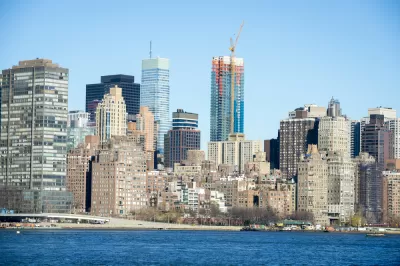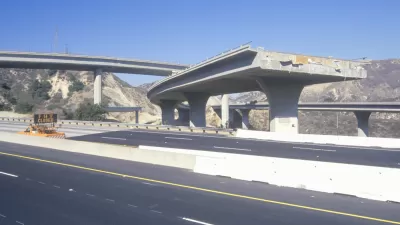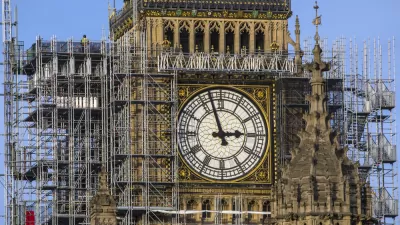Resilience standards—like LEED--could transform building practices. But there are many standards to choose from, and few are aware that they exist. A new report helps planners and builders choose the right standard for every project.

In this era of frequent and costly disasters—both natural and manmade—there is an urgent need to upgrade the resilience of the built environment. Planners and builders are stepping up to the challenge. Public officials, too: In July, local elected officials gathered at the Resilient Cities Summit in Vermont and New York City hosted a major meeting of urban resilience practitioners at the first 100RC Urban Resilience Summit.
To complement these efforts, various public- and private-sector groups have issued voluntary resilience standards—a rapidly proliferating array of certifications, benchmarking systems and design principles. The creators of these standards hope to catalyze a shift in building norms, much as the LEED (Leadership in Energy and Environmental Design) program fostered a move toward more sustainable buildings.
But while LEED has won broad acceptance, resilience standards are at a much earlier stage of development. For one thing, "In our interview research, many developers did not know the standards existed," says Kathryn Wright of Meister Consultants Group in Boston. "When they are asked to plan for resilience, they wind up reinventing the wheel." Wright recently co-authored a new report that sorts through the emerging resilience standards, in order to help practitioners make better decisions and improve the state of practice for the field as a whole.
The report reveals a crowded landscape of standards addressing a range of hazards, from flooding to earthquakes and terrorism. The standards' creators are an equally wide-ranging group—from the U.S. Green Building Council to the Department of Defense. Some standards, for example, operate at the facilities level, focusing on a single building or a campus-level electrical grid. Others, still under development, will operate at the district scale, assessing the vulnerabilities of larger systems such as waste and transportation.
Inevitably, the standards offer differing measures of resilience. Many are narrowly performance-based, assessing how a building (or a system within a building) will withstand certain shocks or stresses. Others take a more holistic approach, helping decision makers assess their facilities' vulnerabilities and prioritize responses accordingly.
A few pioneering standards—including the Resiliency Action List (RELi) [pdf], Building Resilience—Los Angeles (BRLA), and the Enterprise Green Communities certification [pdf]—consider buildings within their larger social context, and seek to build cohesive, adaptive communities. For example, BRLA encourages facilities managers to engage with neighbors and think expansively about investments in community resilience.
Confronted with this vast array of standards, what's a resilience-minded planner to do? The Meister report offers a good starting point; its matrix can help identify the right standard for a particular project, saving time and resources.
More broadly, how does resilience planning become the norm? Many players have important roles here. Major real estate industry associations could raise awareness about standards and share information about resilient building techniques. The insurance and reinsurance industries—which stand to benefit mightily from risk mitigation—could incentivize the adoption of resilience standards. Lenders and financiers, as well as regulators and state and local officials, could follow suit. In short, industry outreach, combined with opportunities to monetize investments in resilience, could greatly speed the uptake of resilience standards.
This summer's conferences on resilience are evidence of growing political will to address this issue. "Local officials understand the urgent need to advance the preparedness of the built environment," says Jon Crowe, vice president at Meister Consultants Group, who attended the Resilient Cities Summit. "Real progress on resilience will require a cooperation and commitment from both the public and private sectors," he adds.
Planners and builders have an immediate role to play. Today, they can choose from an ever-growing menu of resilience standards. And, as with early adopters of LEED, they can improve the system by communicating challenges and results to the organizations developing the standards. "The standards are out there," says Kathryn Wright, "it's time to put them to use."
—
Laurie Mazur is editor of the Island Press Urban Resilience Project, which is supported by The Kresge Foundation and The JPB Foundation.

Montreal Mall to Become 6,000 Housing Units
Place Versailles will be transformed into a mixed-use complex over the next 25 years.

Planetizen Federal Action Tracker
A weekly monitor of how Trump’s orders and actions are impacting planners and planning in America.

DARTSpace Platform Streamlines Dallas TOD Application Process
The Dallas transit agency hopes a shorter permitting timeline will boost transit-oriented development around rail stations.

Interactive Map Reveals America's “Shade Deserts”
Launched by UCLA and American Forests to combat heat-related deaths, the tool maps the shade infrastructure for over 360 U.S. cities.

Bicycles and Books — In Sacramento, Libraries Now Offer Both
Adult library card holders can check out e-bikes and e-trikes for up to one week.

Colorado Landfills Emit as Much Pollution as 1M Cars
Landfills are the third-largest source of methane pollution in Colorado, after agriculture and fossil fuel extraction.
Urban Design for Planners 1: Software Tools
This six-course series explores essential urban design concepts using open source software and equips planners with the tools they need to participate fully in the urban design process.
Planning for Universal Design
Learn the tools for implementing Universal Design in planning regulations.
City of Mt Shasta
City of Camden Redevelopment Agency
City of Astoria
Transportation Research & Education Center (TREC) at Portland State University
US High Speed Rail Association
City of Camden Redevelopment Agency
Municipality of Princeton (NJ)





























